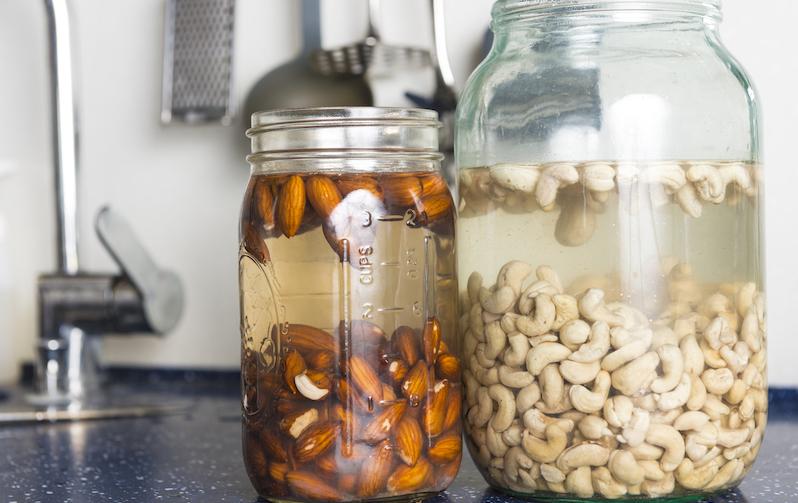
If you have heard of soaking and sprouting food, you may be wondering what it is, and whether it is an important or critical step for optimizing the health benefits of certain foods.
Here’s what you need to know:
Soaking
Soaking is the simple concept of submerging foods such as nuts, seeds and legumes in water. It is commonly done with legumes such as chickpeas and large beans before cooking, and for many people is a regular practice with nuts and seeds such as almonds, walnuts and pumpkin seeds. Once the nuts and seeds are soaked, they can then be dehydrated to help them resume their crunch and this constitutes an “activated” nut or seed.
Why soak?
Soaking nuts and seeds releases a compound called phytic acid. This is a naturally occurring compound in the plant, which for many people can lead to digestive distress and the inability to extract nutrients. Soaking for just 24 hours helps remove the phytic acid. From there, you can drain the water, storing the nuts or seeds in the fridge and eating them as is, or dehydrate them until crunchy again, as mentioned above. Soaking legumes is important to allow them to cook properly and because it makes them easier to digest once cooked. Lentils are typically fine to cook without soaking, but most other beans including chickpeas, kidney beans, black beans and borlotti beans, all need adequate soaking in advance.
Sprouting
You can think of sprouting as the step after soaking, whereby you allow your soaked ingredients to start to sprout, the same as if they were planted in the ground. Sprouting food encourages the development of rich enzymes and nutrients in the foods because hypothetically the food is getting ready to grow new life. This means it is healthy and full of all the important micronutrients that are essential for optimal health at any age.
To sprout grains, legumes, nuts or seeds, first rinse the product thoroughly 2-3 times. Drain at the end, making sure all the water has drained off. Place the ingredient in a jar, set it on the counter in a warm place out of the sun, and cover with a see-through, breathable cloth. Each day, 2-3 times, take the ingredients that you are soaking, out of the jar, rinse well, and then return to the jar. This allows them to sprout without going mouldy.
Why sprout?
The main benefit behind sprouting is that the food you eat is richer in enzymes and nutrients and for many people, is easier on their digestive tract. You can sprout legumes, nuts and seeds as mentioned above, as well as grains, such as quinoa, buckwheat and millet. Grains are often sprouted and dehydrated before being turned into flour. If you are looking for the maximal health content for your baked goods and cooking, selecting sprouting or sprouted grains is advised.
While soaking and sprouting isn’t right for everyone, and indeed many people enjoy their nuts and seeds without soaking at all, it does offer increased nutrient value and may make digestion easier for certain people who find they have difficulty digesting nuts and seeds.
By: Laura Peill, RHN, BScH

Leave a comment